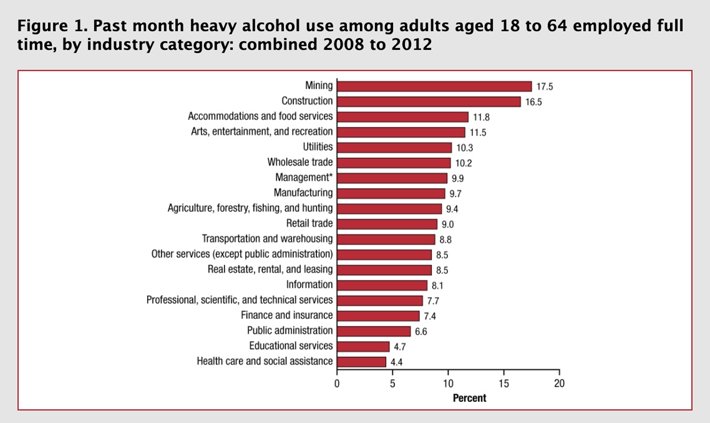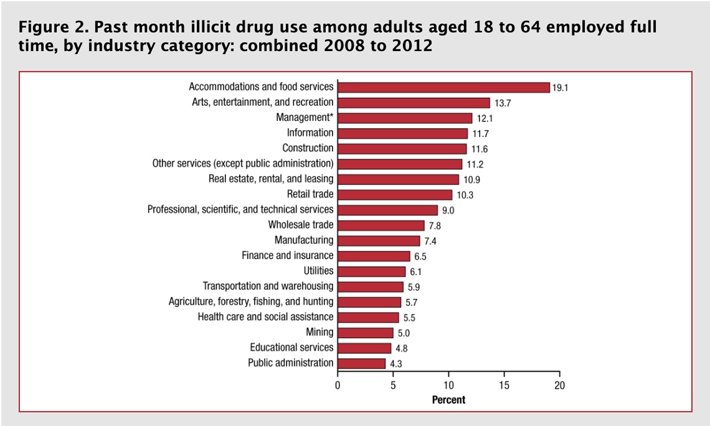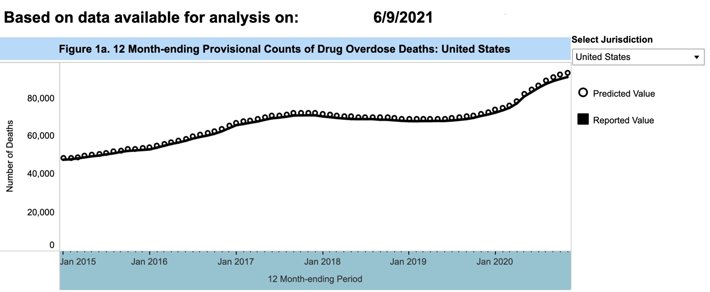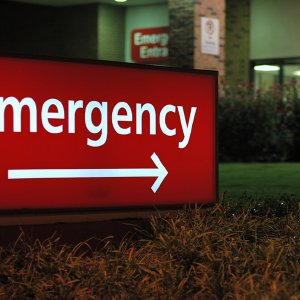The Impact of Drug Use and Addiction on America’s Health

We all know that drug abuse, alcoholism and addiction take a terrible toll on individuals, families and communities. On a larger scale, this problem also takes a terrible toll on the health of our nation. The myriad effects of substance abuse and addiction fray every fiber of the fabric of our society—businesses, education, healthcare institutions, the well-being of our families. And our health, both as a nation and as individuals, suffers. We all suffer in some way.
Let’s unpack this situation and look at the different consequences and how they reach into each of our lives.
Increased Healthcare Costs
How much is drug abuse, alcohol misuse and addiction costing America? The following figures are a bit overwhelming but you’ll get the idea. Total costs and a breakout of healthcare costs are both astronomical.
- In Florida alone, healthcare costs due to illicit drug use hit $6.4 billion over a three-year period.
- Medicare was the biggest payer, followed by Medicaid and private insurance.
- The Centers for Disease Control and Prevention (CDC) estimates the total cost of alcoholism at $249 billion per year.
- The CDC also reports that in California alone, the annual cost of alcoholism was $35 billion.
- Healthcare costs were 11% of the total, or an estimated $27.4 billion nationally or nearly $4 billion in California.
- Another study, this one from 2013, estimated the healthcare and addiction treatment costs for opioid abuse alone to be $28.9 billion.
- Healthcare costs for each person addicted to opioids is estimated at $14,705 per person plus $1,660 for substance abuse treatment.
- Healthcare cost for each fatal overdose is estimated at $5,462.
Sometimes I think about all the good we could do with these funds if we could just eliminate addiction.

Overloaded Emergency Rooms and Hospitals
A 2021 research project calculated the costs incurred in emergency room and inpatient encounters in American hospitals that resulted from substance use disorders. The total bill was $13.2 billion. The largest part of this cost came from alcohol-related disorders at $7.6 billion.
A compilation of the causes of visits to 49 emergency rooms across the nation showed that there were nearly 59,000 substance abuse-related visits to these ERs between April 2019 and October 2020. The most common drugs sending people to the ER were methamphetamine and alcohol. More than 10,000 people were rushed to the ER because of problems with alcohol alone and another 10,000 because of problems with alcohol plus one or more other drugs.
Illnesses or Injuries Directly Caused or Contributed to by Drugs and Alcohol
From the National Institute on Drug Abuse (NIDA), the following is a partial list of illnesses caused by drug abuse and addiction:
Short-term effects can range from changes in appetite, wakefulness, heart rate, blood pressure, and/or mood, to heart attack, stroke, psychosis, overdose, and even death. These health effects may occur after just one use. Longer-term effects can include heart or lung disease, cancer, mental illness, HIV/AIDS, hepatitis, and others.
A 2014 study also included:
- Respiratory problems
- Sexually transmitted diseases
- Poisoning
- Cancers
- Diabetes
- Stroke
- Liver damage and cirrhosis
- Heart disease
- Reproductive harm or fatality
- Assaults
- Suicide
- Dementia
There are also traffic accident injuries and injuries from falls, particularly among older people.
For a detailed list of the damage to health resulting from drug abuse, visit this page on the NIDA website.
Burdens on Our Businesses
In dollar value, one of our greatest losses due to drugs or alcohol is productivity losses. Reduced productivity accounts for 72% of the cost stemming from alcohol use in America. In addition to productivity losses, our businesses struggle with higher rates of illness, absenteeism and attrition due to drug or alcohol-related health issues. A key employee or executive who is on the job today may be missing tomorrow due to drug or alcohol-related health issues.
In the following charts, you can see the businesses most affected by alcohol or drugs.


Burdens on Our Educational Institutions
Every college and university knows that many of their students are going to drink. For many students, living at their college or university is the first time they’ve been away from their parents’ supervision. Not all young adults are prepared for this freedom and alcohol consumption is heavy on some campuses. The National Institute on Alcohol Abuse and Alcoholism (NIAAA) notes that 53% of college students consume alcohol each month and 33% binge drink. One in four students report that their drinking interferes with their schoolwork or academic success.
The NIAAA lists the fallout from this alcohol consumption: suicide attempts, health problems, injuries, unsafe sexual behavior, and driving under the influence of alcohol.
And this is just alcohol. It doesn’t take into account the academic, mental or physical harm done by the use of marijuana, painkillers or prescription stimulants.
Direct Overdose Deaths
America is, factually, in a quiet state of crisis. While much attention has been focused on other health-related causes of concern, our overdose rate has been skyrocketing, led by increases in fentanyl overdoses.
The Centers for Disease Control and Prevention (CDC) maintains a chart showing the number of overdose deaths in the prior twelve months, updated monthly. To create this chart, the CDC predicts the estimated number of deaths and then, as these numbers are finalized, indicates reported values with a solid black line. You can see this chart here.

The predicted number of overdose deaths for the twelve months ending November 2020 is 92,751. For comparison, the reported number of deaths for the twelve months ending January 2015 was 47,523.
As noted above, the healthcare cost alone for each person who fatally overdoses is $5,462. For 92,751 predicted fatal overdoses, the total healthcare bill would amount to $506.6 million.
If we could, by magic, imagination or hard work, eliminate this scourge, this monumental human loss would disappear.
Decreased Life Expectancy and Average Health Index
At this time, America isn’t even in the list of top ten healthiest countries. We rank #35 on the list of healthiest countries.
The U.S. has also seen a decline in life expectancy. In 1980, life expectancy in the U.S. was 73.6 years. By 2014 it was 78.9 years and then this number began to decline. By 2018, it was 78.7 years.
Some researchers attribute this decline to fatal drug overdoses, alcohol-related diseases, and suicides. Overdose deaths rose an astonishing 387% between 1999 and 2017. Deaths from alcoholic liver disease rose 41% in the same time period, further contributing to a lowered life expectancy.
What Would it Be Like if We Eliminated This Problem?
What if we could, by that aforementioned magic or at least by imagination, make this problem vanish? How would our nation change, focusing just for a moment on the improvements to the health of our citizens?
I’ll make some suggestions of what I think the results would be. I’m sure you can think of others.
- There would be fewer workplace accidents. Fewer people would injure themselves as a result of their impairments and fewer bystanders would be harmed.
- There would be fewer workman’s compensation claims so insurance premiums caring for sick or injured employees would be lower, saving businesses money.
- Employees would be more productive when they are not impaired by being stoned, high, hungover or otherwise impaired by drugs or alcohol while on the job.
- There would be less absenteeism in workplaces.
- Businesses would therefore be more successful and profitable. Job security would therefore be higher.
- Our emergency departments would be less busy, especially in areas plagued with a high volume of drug use.
- Uncovered hospital costs would be lower, enabling hospitals, federal and state programs and insurance companies to reduce the expense passed on to the rest of us.
- As a group, we would suffer lower rates of the debilitating or fatal illnesses that are directly caused by drug or alcohol consumption, plus lower rates of illnesses contributed to by this consumption. This would reduce our national healthcare costs, reducing also the costs passed on to every household in the country.
- Our national life expectancy would surge upward.
- We would surely rank higher on the list of healthiest countries in the world.
- Our colleges and universities would be freed from some of their concern about student health and welfare. Educational costs might be somewhat lower.
- Our first responders would be less stressed as they would have fewer calls to rescue Americans from drug overdoses, drug-related illnesses, accidents or alcohol poisoning.
- Community-wide, our stress would be lower because of fewer losses of loved ones and reduced drug-related crime. Again, this would be most pronounced in cities in which drug abuse is so high. With lower stress, each of us has a chance to be healthier.
Sources:
- https://jamanetwork.com/journals/jamanetworkopen/fullarticle/2777032
- https://substanceabusepolicy.biomedcentral.com/articles/10.1186/s13011-020-00313-2
- https://worldhealth.net/news/bloombergs-global-health-index-2020/
- https://www.cdc.gov/nchs/nvss/vsrr/drug-overdose-data.htm
- https://www.cdc.gov/alcohol/onlinemedia/infographics/cost-excessive-alcohol-use.html
- https://www.cdc.gov/alcohol/features/excessive-drinking.html
- https://www.ncbi.nlm.nih.gov/pmc/articles/PMC5975355/
- https://jamanetwork.com/journals/jama/article-abstract/2776338
- https://www.drugabuse.gov/drug-topics/health-consequences-drug-misuse/introduction
- https://www.collegedrinkingprevention.gov/media/collegedrinkingFactSheet2021.pdf
- https://www.ncbi.nlm.nih.gov/pmc/articles/PMC7144704/
- https://www.cdc.gov/mmwr/volumes/70/wr/mm7015a1.htm
- https://www.samhsa.gov/data/sites/default/files/reports/rpt32809/DAWN%20Profile%20Expanded.pdf
- https://www.ncbi.nlm.nih.gov/pmc/articles/PMC5373082/
- https://www.samhsa.gov/data/sites/default/files/report_1959/ShortReport-1959.html
Reviewed by Claire Pinelli, ICAADC, CCS, LADC, RAS, MCAP, LCDC


 ®
®